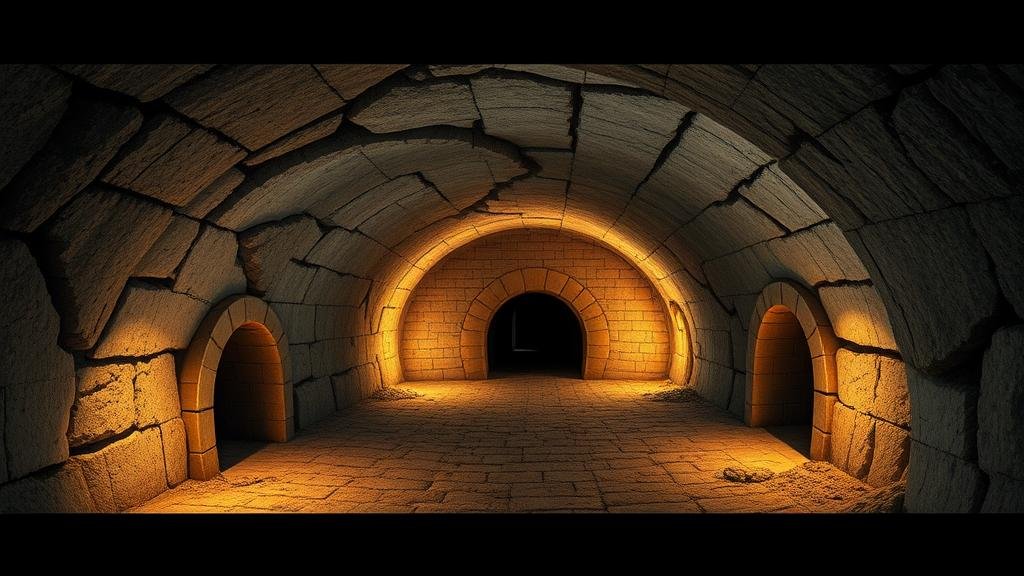Tracing the origins of myths about tunnels leading to underworld kingdoms.
Tracing the Origins of Myths about Tunnels Leading to Underworld Kingdoms
The concept of tunnels leading to underworld kingdoms has fascinated humanity for centuries, appearing in myriad cultures and mythologies. These narratives often reflect ancient societies fears and curiosities surrounding death, the afterlife, and the unknown. This article explores the origins and significance of such myths, supported by historical examples and cultural interpretations.
Historical Context of Underworld Myths
Understanding the origins of underworld tunnel myths requires a look into the historical and cultural contexts of ancient civilizations. belief in an afterlife and the existence of otherworldly realms is a recurring theme across various cultures, with many societies depicting the underworld as a place accessible through specific physical locations, such as caves or tunnels.
Mesopotamian Myths
One of the earliest recorded mentions of an underworld is found in ancient Mesopotamian texts, specifically the Epic of Gilgamesh, dating back to around 2100 BCE. In this epic, the hero Gilgamesh traverses the Cedar Forest, which is said to lead to a realm of gods and the dead. The underworld, known as Kur, is depicted as a dark, desolate place from which no one escapes:
- The common idea of a tunnel is present as Gilgamesh seeks knowledge about immortality.
- Kur is described as having gates that prevent the living from passing through easily.
Greek and Roman Interpretations
Greek mythology presents another significant example with Hades, the god of the underworld, often associated with the river Styx, which souls must cross to reach the afterlife. Virgils Aeneid, written around 19 BCE, describes Aeneass journey to the underworld through a dark tunnel leading to the realm of the dead. This journey emphasizes the trials one must face:
- The descent into Hades is characterized by obstacles, highlighting that the path to the underworld is fraught with challenges.
- The notion of needing a guide, such as Charon the ferryman, further illustrates the eerie journey into darkness.
Asian Influences: The Myth of the Chinese Underworld
In Chinese mythology, the underworld, known as Diyu, is depicted as a complex realm comprising various hells, each serving different purposes for the deceased. Legends such as the Journey to the West (16th century CE) describe tunnels leading down to Diyu, filled with trials and moral lessons for wandering souls. Murals from the Tang Dynasty (618-907 CE) showcase these concepts vividly:
- These tunnels, often portrayed as long, dark paths, symbolize the purification of souls before reincarnation.
- The imagery of these underground tunnels helps convey the consequences of one’s earthly actions.
Symbolism and Psychological Interpretations
The myths surrounding underworld tunnels evoke profound symbolism. They serve as metaphors for personal transformation, fear of the unknown, and the natural human inclination to ponder existence beyond life. Psychologically, the journey through darkness often represents confronting one’s deepest fears and traumas:
- Tunnels can symbolize the transition from ignorance to knowledge.
- By navigating these mythical pathways, characters often emerge with newfound wisdom or strength.
Modern Reflections on Ancient Myths
Todays literature and media often draw inspiration from these ancient myths. Films such as The Lord of the Rings, with its dark tunnels of Moria representing the underworlds perils, reflect on this thematic history. Similarly, video games like Hades emphasize the exploration of Greek underworld concepts in dynamic ways.
Conclusion: The Enduring Fascination with Underworld Tunnels
The myths surrounding tunnels leading to underworld kingdoms are rich with historical and cultural significance. They demonstrate humanitys enduring fascination with death, the afterlife, and the metaphoric journeys that accompany them. As we continue to explore these themes in modern storytelling, the lessons embedded in these myths remain relevant.
To engage further with these concepts, individuals can:
- Read ancient texts such as The Epic of Gilgamesh or The Aeneid to explore these ideas in their original contexts.
- Examine modern adaptations in literature and film to understand how these themes are reinterpreted today.
Ultimately, the exploration of tunnels leading to underworld kingdoms is not only a journey through myth but also through the complexities of the human experience itself.



